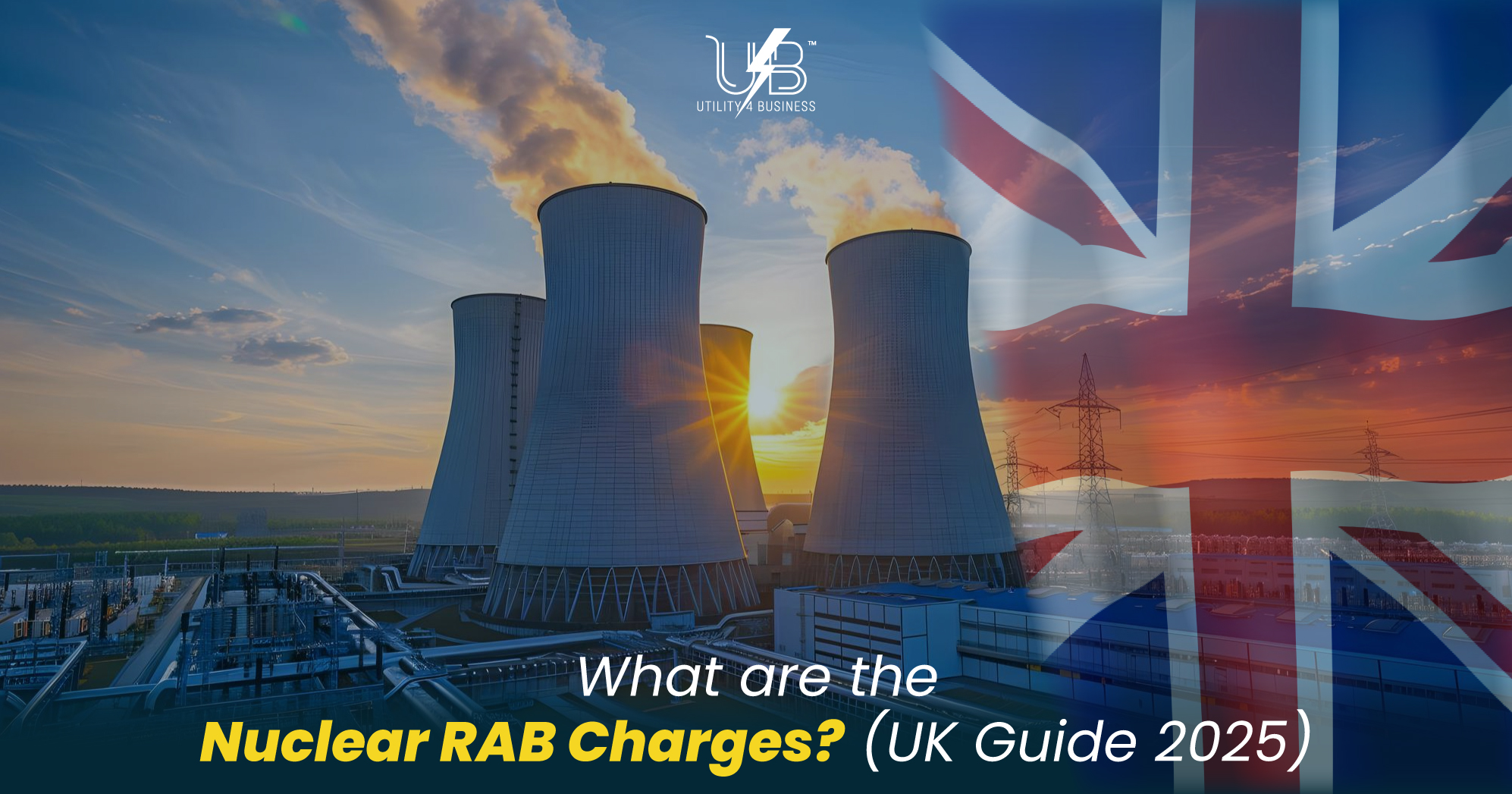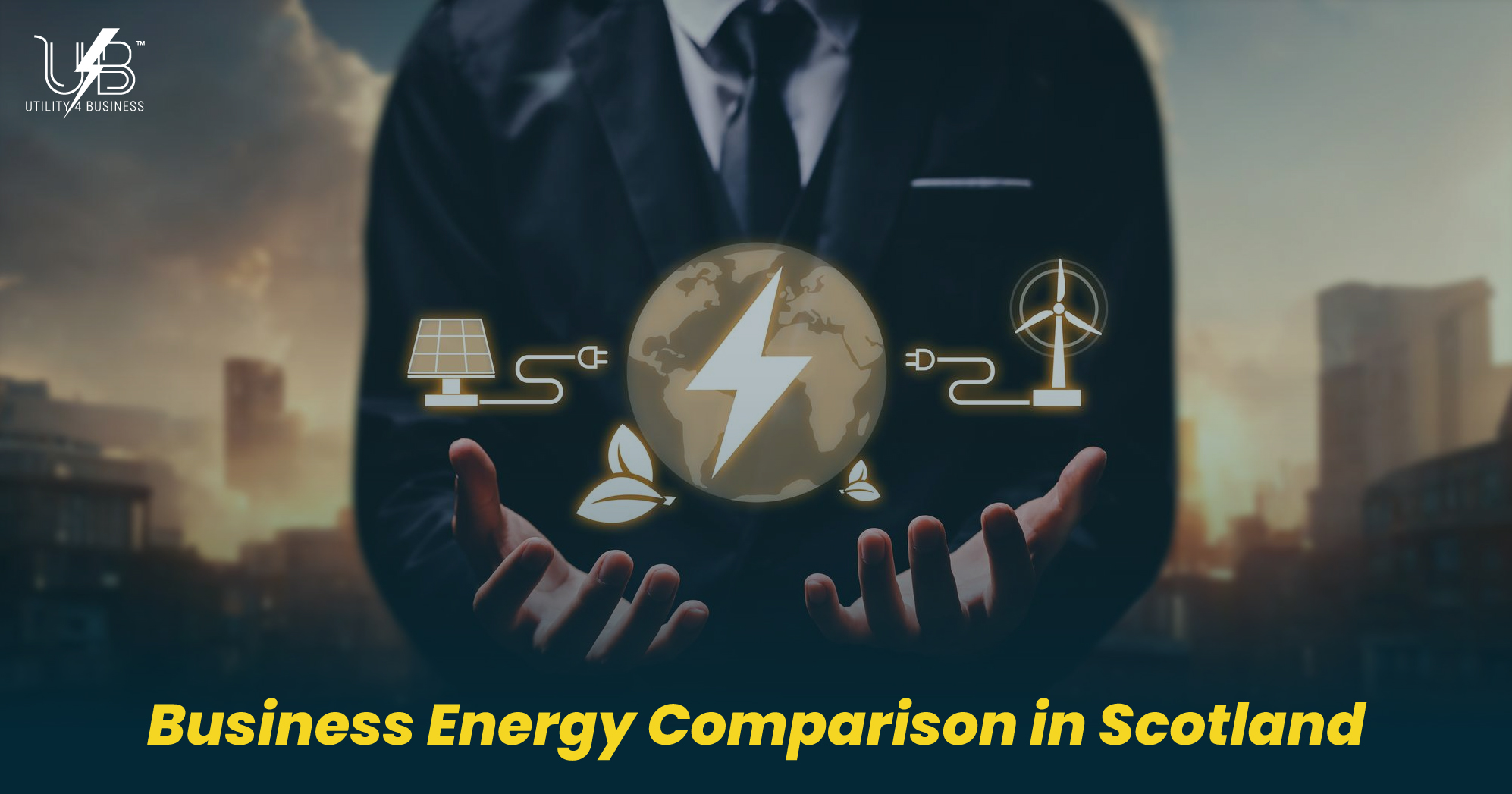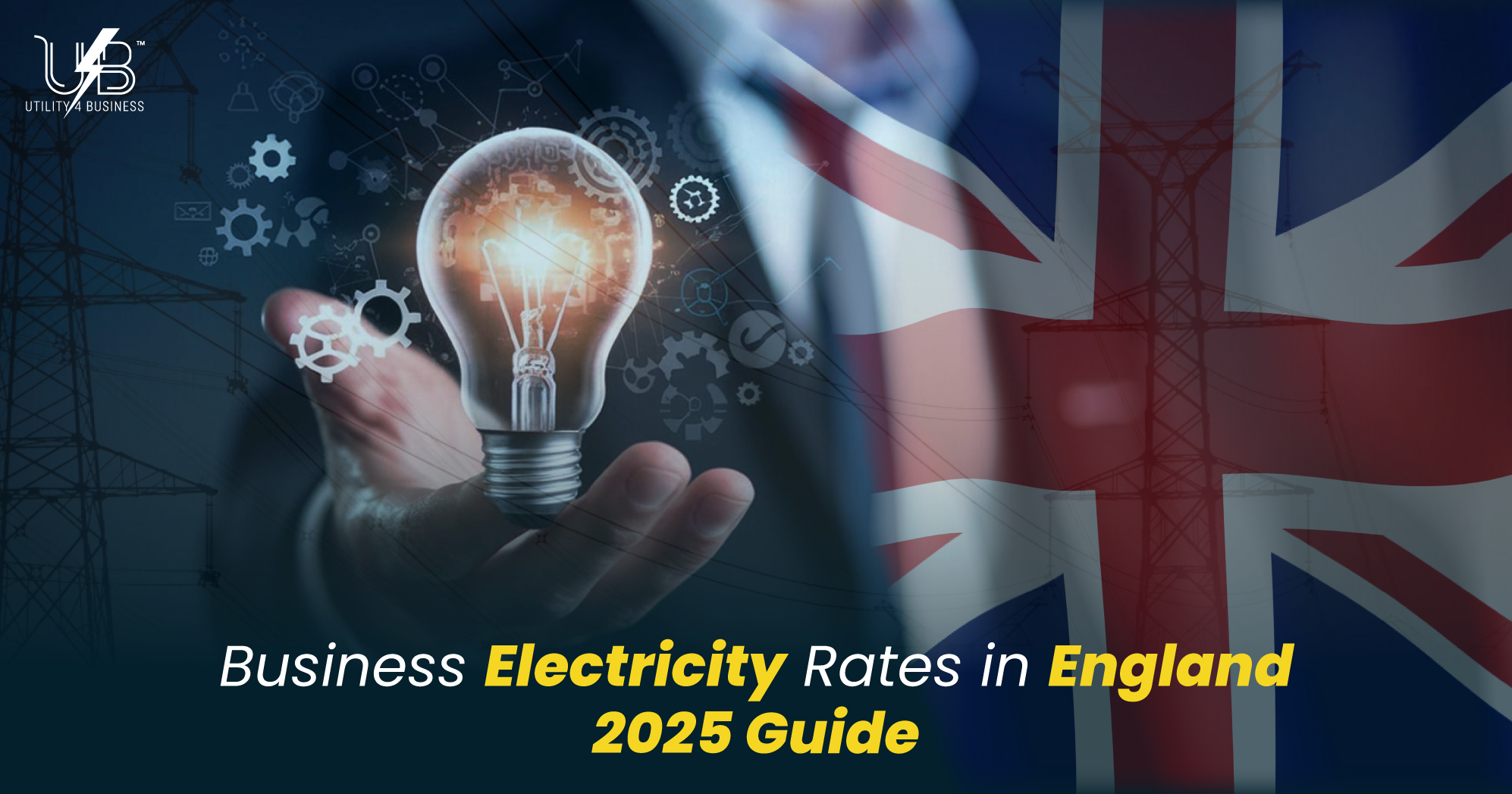What are the Nuclear RAB Charges? (UK Guide 2025)
UK Nuclear RAB Charges Explained Simply

Introduction
In 2025, new Nuclear Regulated Asset Base (RAB) charges are being added to UK electricity bills to help fund the construction of new nuclear power stations, starting with Sizewell C announcement.
Unlike the old Contracts for Difference (CfD) model, where consumers only paid once a plant started generating electricity, under the RAB model consumers pay during the construction phase.
This guide explains what nuclear RAB charges are, the confirmed 2025–2027 rates, why the UK has adopted this model, and how businesses can prepare.
Quick Facts (TL;DR)
- Operational Costs Levy (OCL): £0.0028/MWh from 1 October 2025.
- Supplier Obligation Levy (Interim Levy Rate – ILR): £3.455/MWh (0.3455p/kWh) from 1 November 2025 – 31 December 2025.
- Increase confirmed: ILR rises to £3.93/MWh (0.393p/kWh) from 1 January 2026.
Quarterly forecasts published by LCCC up to March 2027 show rates will vary: ~£3.50/MWh in winter and ~£4.50/MWh in summer.
What is the Nuclear RAB Model?
The Nuclear Regulated Asset Base (RAB) model is a new financing framework designed for large-scale nuclear infrastructure.
How it works:
- Investors receive a regulated income during construction, funded by levies on electricity bills.
- Consumers begin contributing earlier, not just once plants are operational.
Why it matters:
- Lowers investor risk → easier to attract billions in funding.
- Reduces financing costs compared to CfD.
- Shares risk between consumers, investors, and taxpayers.
Risk-sharing structure:
- Consumers (ratepayers): Pay levy during construction.
- Investors: Share in cost overruns (to a cap).
- Taxpayers: Government backstop covers extreme overruns.
This is a major shift from CfD, where investors absorbed most risks and revenue only began once electricity was generated.
The UK government has confirmed that future nuclear plant funding will be underpinned by the RAB model as part of its official energy policy.
Why Has the UK Introduced the Nuclear RAB?
The charges are central to the UK’s long-term energy security and Net Zero strategy, overseen by Great British Nuclear (GBN).
Key drivers include:
- Energy security: Reducing reliance on imported electricity.
- Decarbonisation: Nuclear provides low-carbon baseload power.
- Replacing ageing reactors: Most UK nuclear plants will retire by 2035.
- Financing challenge: Nuclear projects cost tens of billions and need new funding models.
- Target: Expand nuclear capacity from 6 GW today to 24 GW by 2050.
As Deloitte highlights, innovative financing models like RAB are essential to attract private capital for such multi-billion-pound projects.
Who Will Pay the RAB Charges?
- Businesses on pass-through contracts: Charges will automatically be added to bills from November 2025.
- Businesses on fixed contracts: Many suppliers include clauses allowing new government levies to be added mid-contract. Always check with your provider.
- Households: Will also see these charges, but the financial impact is larger for energy-intensive businesses.
The introduction of these charges has already made headlines, with BBC News reporting widespread concern among both households and businesses about rising electricity costs.
Are There Any Exemptions?
Yes. Businesses eligible for the Energy Intensive Industries (EII) exemption scheme will not pay nuclear RAB charges.
- Apply via government scheme for exemption certificates.
- Typical sectors: steel, glass, chemicals, cement.
- EII-approved businesses may receive up to 85% exemption on eligible levies.
Average Cost Impact by Business Size
How Your Business Can Prepare
- Budget in advance – Factor the RAB charges into 2025–2027 energy forecasts.
- Review your contracts – Ask your supplier if levies will be passed through under your current agreement.
- Check exemptions – Apply for the EII scheme if eligible.
- Plan for quarterly updates – LCCC will update levy values every 3 months.
- Boost efficiency – Reduce overall consumption to offset new costs.
Energy-Efficiency Tips
- Install LED lighting.
- Use smart meters for real-time monitoring.
- Shift high-energy processes to off-peak hours.
- Service machinery to maintain peak efficiency.
- Train employees to cut wastage.
Government, VAT and Reliefs (2025)
- VAT: Electricity bills are charged at 20% VAT, with some sectors qualifying for reduced rates.
- Reliefs: EII exemption scheme remains the only nuclear RAB relief.
- Support: Grants and funding may be available for efficiency upgrades.
List of Energy Suppliers (Examples)
- British Gas Business – fixed and flexible contracts, national coverage.
- EDF Energy Business – large nuclear operator, business-friendly tariffs.
- Octopus Energy Business – known for tech-driven billing and flexibility.
- E.ON Next Business – SME-focused packages.
- SSE Business Energy – strong industrial energy supply presence.
Summary and Next Steps
The Nuclear RAB charges are a new addition to electricity bills from late 2025.
- Rates begin at £3.455/MWh, with increases confirmed for 2026 and seasonal variation forecast until 2027.
- Costs will be passed through to most UK businesses and households.
- Exemptions are available only for Energy Intensive Industries.
Action now:
- Review contracts.
- Budget for charges.
- Apply for exemptions.
- Improve efficiency.
Find This Article Helpful? Share It Now!
At Utility4Business, we offer top-notch customer support and business utility solutions for businesses across the UK. Consider sharing this article and helping others discover how our expertise can add value to their business success.

Read Our Latest Posts
Explore our latest blog posts and learn how Utility4Business can support your business growth with tailored utility solutions and services. Stay ahead of the curve with the latest information from industry experts and take advantage of our user-friendly comparison services to find the best business deals.


Get Connected
At Utility4Business, our team of experts can help you figure out the highest-value business utility deals that will help your business grow over time.

